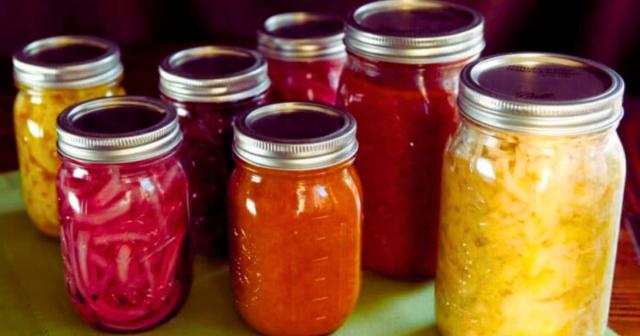Methods of Canning:
In the pursuit of prolonging the freshness of seasonal produce or homemade delights, canning emerges as a time-honored technique. Not only does it extend the lifespan of food, but it also encapsulates the flavors of the season to be enjoyed year-round. As we embark on a journey to preserve nature's bounty, let's delve into three distinct methods of canning at home: the boiling water bath method, the atmospheric steam Canner method, and the pressure canner method. Each technique offers unique advantages, ensuring that regardless of your culinary ambitions or constraints, there's a canning method suited for you.
In a world increasingly focused on sustainability and self-sufficiency, home canning emerges as a cherished tradition, offering a means to preserve the harvest and enjoy seasonal delights year-round. Whether you're a seasoned preservationist or a novice eager to explore the art of canning, mastering various methods opens a gateway to culinary creativity and resourcefulness.
Among the array of techniques available, three stand out as pillars of home canning: the boiling water bath method, the Atmospheric Steam Canner method, and the pressure canner method. Each method possesses its unique set of advantages and considerations, catering to different types of foods and preferences.
3 Methods of Canning:
- Boiling water Bath Method,
- Atmospheric Steam Canner Method
- Pressure Canner Method
Boiling Water Bath Method:
The boiling water bath method is perhaps the most accessible and beginner-friendly technique for home canning. Utilizing basic kitchen equipment and a large pot, this method is ideal for preserving high-acid foods such as fruits, jams, pickles, and some tomatoes. Here's a step-by-step guide to mastering the boiling water bath method:
1. Prepare your jars, lids, and bands by washing them thoroughly with hot, soapy water. Inspect them for any chips or cracks, as these can compromise the seal.
2. Fill your canning pot with enough water to cover the jars by at least one inch. Bring the water to a gentle boil.
3. Meanwhile, prepare your recipe and fill the hot, sterilized jars with the food product, leaving the recommended headspace.
4. Wipe the rims of the jars with a clean, damp cloth to ensure a proper seal, then place the lids on top and screw on the bands just until fingertip tight.
5. Carefully lower the filled jars into the boiling water using a jar lifter, ensuring they are fully submerged. Process for the recommended time according to your recipe.
6. Once the processing time is complete, remove the jars from the water bath and place them on a clean towel to cool. As the jars cool, you'll hear the satisfying "ping" of the lids sealing.
Atmospheric Steam Canner Method:
The atmospheric steam canner method offers a modern twist on traditional water bath canning, using steam to create the necessary heat for processing. This method is suitable for high-acid foods and is favored for its efficiency and reduced water usage. Here's how to utilize an atmospheric steam canner:
1. As with the boiling water bath method, start by preparing your jars, lids, and bands.
2. Fill the base of the steam canner with the recommended amount of water and bring it to a simmer.
3. While the water heats, fill your jars with the prepared food product and place them on the canner's rack.
4. Once the water is simmering and steam is visible, carefully lower the rack of filled jars into the canner.
5. Cover the canner with its lid and adjust the heat to maintain a steady stream of steam. Process the jars for the recommended time.
6. After processing, carefully remove the jars from the canner and place them on a clean towel to cool. As with water bath canning, listen for the satisfying "ping" of the lids sealing.
Pressure Canner Method:
For low-acid foods such as vegetables, meats, and soups, the pressure canner method is essential to ensure safety and preservation. Unlike boiling water bath canning, pressure canning utilizes steam under pressure to achieve higher temperatures, effectively eliminating harmful bacteria like Clostridium botulinum. Here's how to master pressure canning:
1. Prepare your pressure canner according to the manufacturer's instructions, ensuring all parts are in working order.
2. Assemble your jars, lids, and bands, and prepare your recipe.
3. Fill the canner with the recommended amount of water, typically two to three inches, and place the rack inside.
4. Fill your jars with the prepared food product, leaving the recommended headspace, and place them on the rack inside the canner.
5. Secure the lid of the pressure canner according to the manufacturer's instructions and vent the canner to release any trapped air.
6. Once the canner reaches the appropriate pressure, start timing the processing according to your recipe. Monitor the pressure throughout the process, adjusting the heat as needed to maintain a steady pressure.
7. After processing, allow the pressure to naturally release before carefully opening the canner. Remove the jars and place them on a clean towel to cool. As with other methods, listen for the audible "ping" of the lids sealing.
What are 3 examples of canning?
1. Fruits:
2. Vegetables:
3. Meat and Poultry:
Conclusion:
Mastering the art of home canning opens a world of culinary possibilities, allowing you to savor the flavors of each season long after they've passed. Whether you're drawn to the simplicity of the boiling water bath method, the efficiency of the atmospheric steam canner method, or the versatility of the pressure canner method, there's a technique suited to your preferences and culinary ambitions. With practice and attention to detail, you'll soon become adept at preserving the harvest and delighting in homemade goodness throughout the year. Happy canning!

